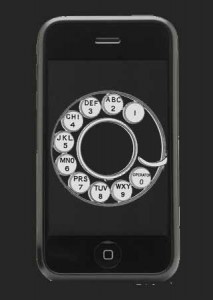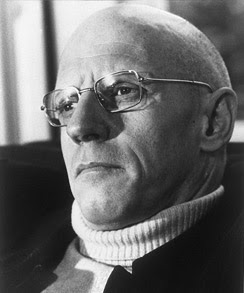The essays that comprise this reader forage far and wide for fodder. This review cannot encompass the entire scope of their contributions, but in the same way that the collection provides an introductory overview of many crucial topics in internet (and related media/technology) studies, we can begin with a look at some highlights from the text, and then return later for more in-depth analysis and critique of other selections. Wendy Chun’s introduction to the volume does a more complete and thorough job of this than can a blog post. If we begin with a review of her piece, then, we get a good sense of the state of internet research as far as media studies are concerned. What emerges at the limits of this research, made clear by her analysis of the variations on political-economic, visual-cultural, archaeological, systemic, and aesthetic themes taken up by the contributors, is the mobilization of an opposition between continuity and rupture, in both historical and theoretical terms. In other words, media studies – especially new media studies – is founded on the claim that it can mediate between change and continuity.
Tag Archives: introduction

Foucault – Tutor-Texts and Intellectual Lineage
This first post in a short-term regular series of essays on Michel Foucault deals with his most famous influences. I begin with the precursors to Foucault’s own production of knowledge because their work and tutelage form the conditions of that production. This requires that I oversimplify some of their contributions to cultural scholarship and critical theory. I hope to maintain a baseline level of respect for their importance without fetishizing their names, just as I intend to maintain the tension between the familiarity of Foucault’s own name and the irreducibility of his intellectual production to any single certain thought or text. Enough lingering on qualifications and breast-beating, then. Let me turn to the names and their significance for Foucault’s emergence as a theoretical producer – and event.

- Michel Foucault – image via Creative Commons.
Internet – Introduction
For all its familiarity to users on a daily basis, the internet remains a strange and wild beast, full of secrets and surprises for those of us who take it as our object of research. This marks the first entry in a weekly series of short essays, reflecting on my independent reading this semester with Dr. Sharon Leon, on the topic of the internet in cultural perspective. This week, I will lay out the key terms, concepts, and questions for our course of study, and note the work plan for the semester by way of conclusion. Over this semester, I hope to learn not only myriad technical details and interesting anecdotes about the internet, but also how a rigorously cultural approach to its study might inform my own and others’ future research. These essays should serve to keep the research regular, progressive, and grounded: the best technique that I know for tackling large and complex problems is patience and determination.
For this week, I reviewed some technical literature on the definition, statistical character, and high-level architecture of the internet. These came from academic, market research, and non-profit sources. The wealth of data available now – an archive stretching back at least through the early 1990s – provides some clear background. The internet today comprises some dozen layers from physical infrastructure through end users, and encompasses some untold trillions of web pages, links, and networks. Of course, the most important key terms that this week’s readings reinforced were the obvious ones:
- Networks – the baseline units of which the internet is made up. Comprised of public and private, virtual and physical, metaphorical and concrete, networks are the touchstone and the cornerstone of both the idea and the artifact of the internet. We define networks for our purposes as sets of connected agents – machine, human, or virtual – and include in the set the connections themselves.
- Communication – When we define the internet, we encounter conflicts between those (e.g. the FCC) who wish to define it as a communications medium akin to telephony or broadcast television, and those who seek another primary definition (e.g. the FTC, who wishes to define it as a commerce and trade platform like the stock market, or others who believe that it constitutes a public utility like the power grid or water supply lines). For our purposes, we can remain comfortable with a complex and often contradictory definition that accounts for different structural, economic, and cultural deployments of the internet. This is because we will define it primarily as a CONCEPT, and only secondarily as an ARTIFACT.
- Medium/Media – Regardless of the legal or formal definition of the internet, its status as a communications medium is hardly in doubt. In practice “new media” has folded largely into the internet – digital communications, human-computer interaction, and computer-mediated-communication included alongside applications such as Facebook, Twitter, YouTube, email, and the like. We use media in the broadest possible sense, then, following McLuhan’s prescient if aphoristic sensibility most of the time.
- Structure and Infrastructure – The first few weeks of this course will dedicate their time to unpacking and making clear the incredible complexity at work in the background of any internet instance. The most important aspects of structure and infrastructure, from a beginner’s standpoint, are layers, links, protocols, platforms applications, and services. We will define these in more detail next week.
- Other terms to be defined next week: community, commodity, and architecture.
The key questions for this week are the overall questions for the course. When we define “the internet,” two specific parts of that definition resonate for our purposes. First, what is unique about the internet as a cultural object? Second, what does a cultural study of the internet entail? These lead to our historical inquiries: how did the internet as we know it develop, what kinds of labor were involved, and how has its cultural significance changed over time? We also encounter architectural questions of culture: who maintains and manages each layer, who composes and follows each protocol, and to what ends? Placing the object in social and political context, we will ask whose interests the internet has and continues to serve, and what the mutual effects are between its structure and its context. Finally, diving into the questions of cultural significance, we will examine the internet’s political, economic, and subjective impacts – or at least plan how to answer those. For the next week, however, we will focus on a specific question: What is the structure of the internet? By the time we ask how it got that way, we will have entered the historical aspects of our investigation.
- This is perhaps the most popular visualization of the internet.
